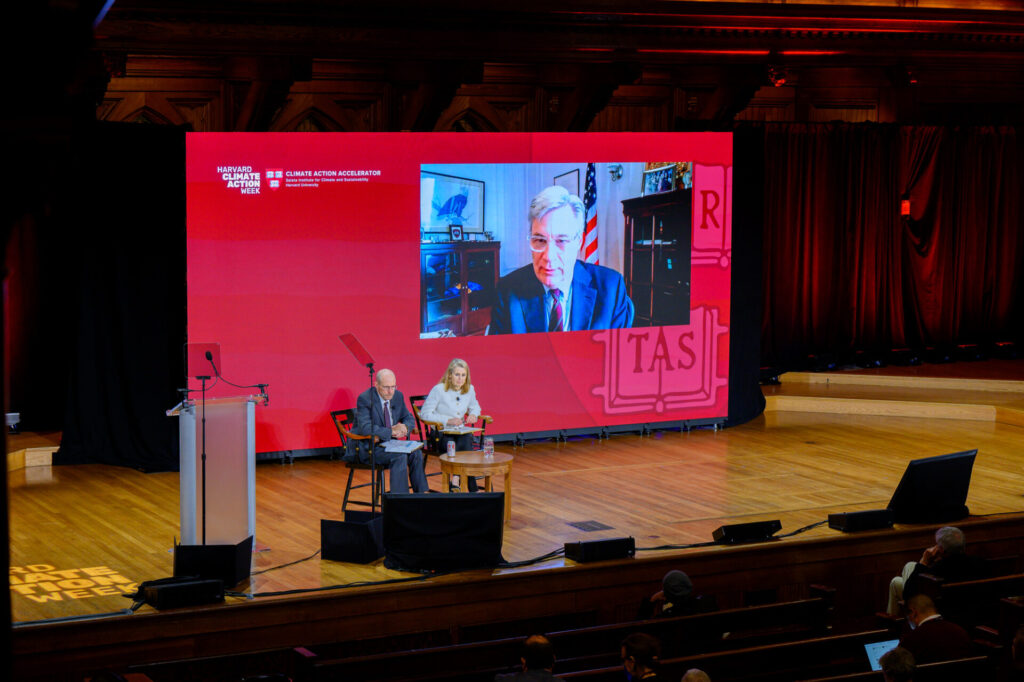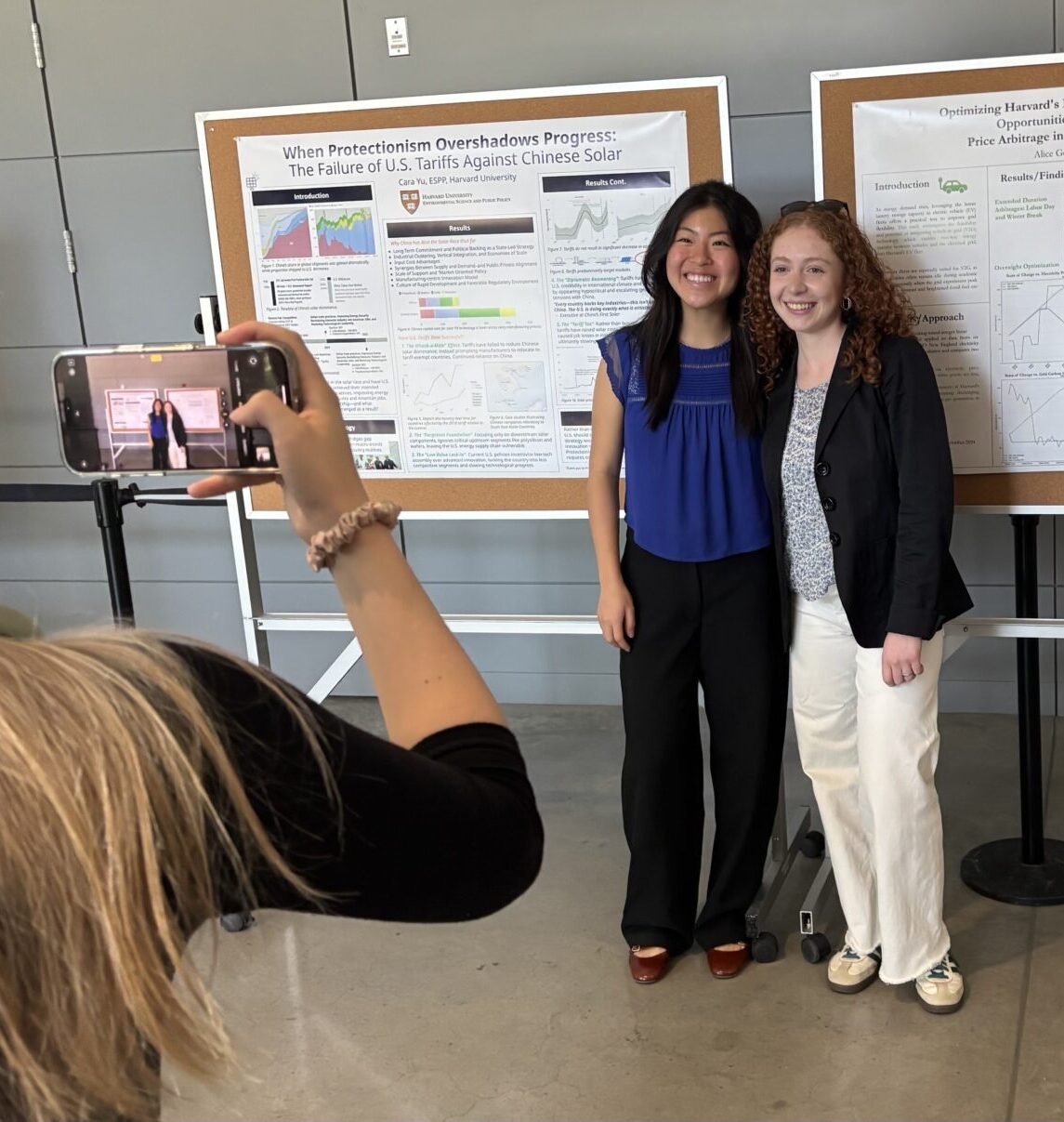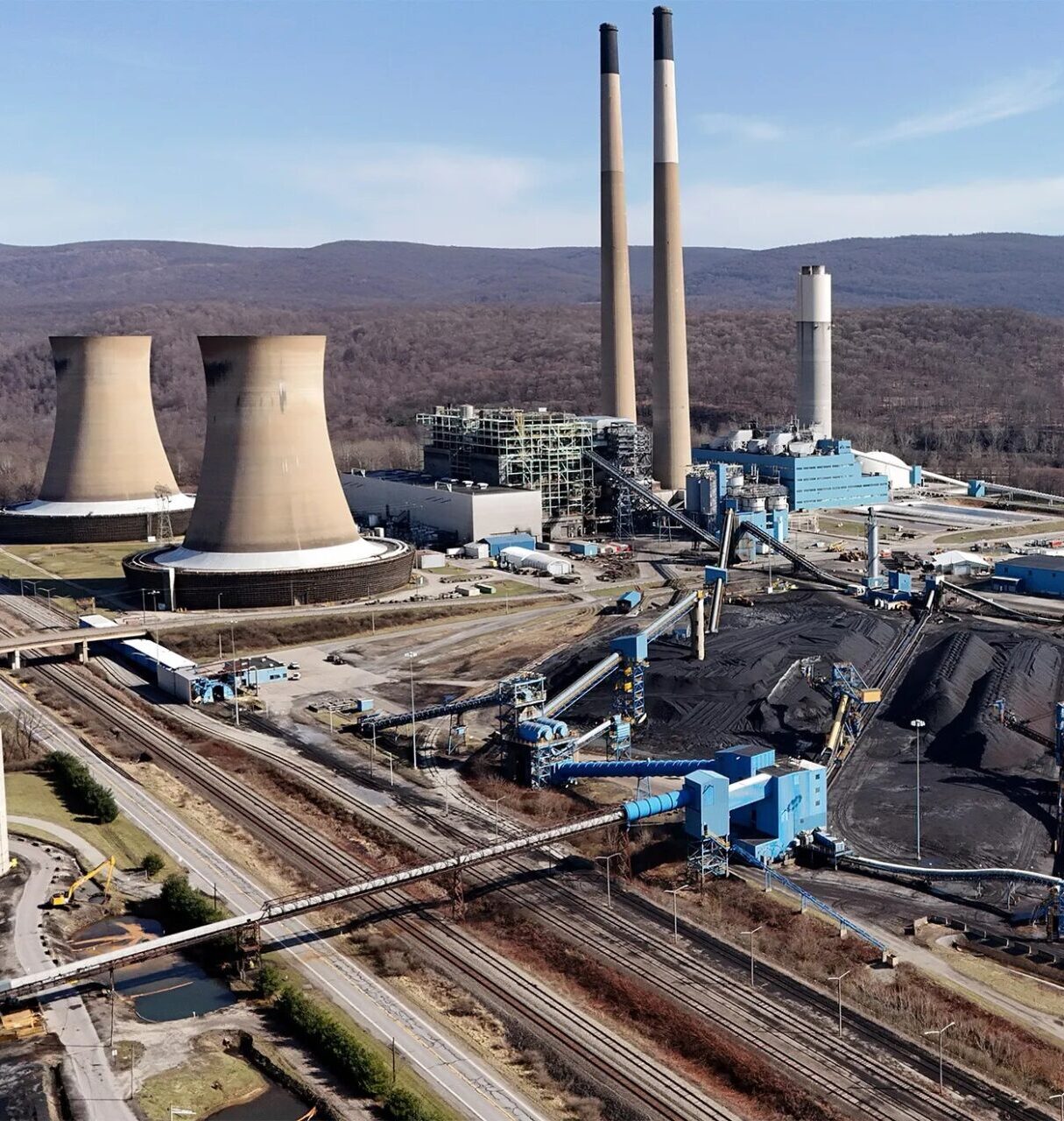Senator Sheldon Whitehouse on Carbon Pricing: There’s No Other Path to Climate Safety
Senator Sheldon Whitehouse did not mince words in a panel discussion held on Monday as part of Harvard Climate Action Week: “If we want a path to climate safety, it’s going to require us to do what is economically and morally right, which is to price carbon pollution.”
In a discussion with economists Catherine Wolfram and James Stock, Whitehouse, the Democratic Senator from Rhode Island and Co-Chair of the U.S. Senate Climate Task Force, dove into the fiscal realities and political challenges of passing carbon pricing legislation—an issue the Senator has long championed as being key to safeguarding against the worst effects of climate change.

Held in Sanders Theater, the panel, hosted by the Climate Action Accelerator at the Salata Institute for Climate and Sustainability, focused largely on how different carbon pricing mechanisms work, the building global movement to implement these programs, and what a realistic domestic carbon pricing system might look like.
“One of the big takeaways is that whatever decision it is that we happen to make around the planet next year, including doing nothing, it’s going to be quite consequential,” said James Stock, Vice Provost for Climate and Sustainability at Harvard University and Director of the Salata Institute.
Carbon pricing aims to reduce greenhouse gas emissions by making pollution more expensive to put into the atmosphere. These programs come in two basic varieties—carbon taxes, which place a cost on the amount of emissions produced, allowing polluters to release as much emissions as they are willing to pay for, and emissions trading schemes, also called cap-and-trade programs, which set a limit on the total amount of emissions and require polluters to obtain permits or allowances that grant them the right them to release a certain amount of pollutants.
Carbon pricing programs are already in effect across much of Europe and in parts of South and Central America, Africa, Asia, and Canada, but the specifics, including tax rates and inflation schedules, scope, and revenue allocation, of these programs vary between countries.
The United States currently does not have a federal carbon pricing program, but that may change, panelists noted, due to a confluence of factors, including accelerating climate impacts, U.S. net zero targets, and motivation to address the federal deficit. Global economic pressures play a role, too, noted panelists, as an increasing number of countries tax imported goods based on the amount of pollution that’s required to make them. The European Union’s Carbon Border Adjustment Mechanism (CBAM)—a tariff that will predominantly impact imported goods from the cement, electricity, fertilizer, some metals, and hydrogen sectors from countries outside the EU—will take effect in 2026.
Catherine Wolfram, Professor of Energy Economics at the MIT Sloan School of Management and former Deputy Assistant Secretary for Climate and Energy Economics at the U.S. Treasury, said a key aspect of CBAM is that it offers credits to countries that have carbon pricing programs, incentivizing these pricing initiatives worldwide.
“If the U.S. manages to implement a carbon price, the CBAM momentum will be even more powerful. The U.S. is such a big consumer in the world economy, it will really turbocharge this momentum,” said Wolfram. “If the U.S. doesn’t have a carbon price, the momentum is still going to be there, the U.S. just isn’t going to be participating in it. There will be decisions made and technical details that U.S. companies won’t be able to participate in. I see that as a real drawback.”
A significant portion of the discussion drew from an NBER working paper authored by Wolfram, Stock, alongside John Bistline, Kimberly A. Clausing, and Neil Mehrotra. The paper outlined several tax-based climate policy scenarios that could happen in the U.S. in 2025 and evaluated each scenario’s impact on the domestic economy, emissions reductions, and climate policy adoption abroad. The authors found that scenarios that extend current policies and include a carbon fee would lower emissions the most—up to about 66% by 2035—and would achieve the 2030 emissions reduction goal.
“The economic logic behind product pricing is so potent and so persuasive, I think that the U.S. will come to this realization,” Wolfram said.
Senator Whitehouse agreed but also pointed to obstacles that hinder carbon pricing legislation. Several bills proposing a federal carbon tax have been floated and failed in recent years, but, Whitehouse said, a new wave of them holds some promise.
In December of 2023, Whitehouse and Suzan K. DelBene, the Democrat representing Washington State’s first district, reintroduced the Clean Competition Act, which proposes a border adjustment on imported goods from carbon-intensive industries, including petroleum and fossil fuels, fertilizers, metals, paper, and petrochemicals, with exemptions for lower-income countries. Most revenue would fund grants to help affected industries invest in decarbonization technologies.
Separate legislation sponsored by Republican Senators Bill Cassidy (Louisiana) and Lindsey Graham (South Carolina) also proposes a border adjustment, though specifics of the bill differ. A bipartisan Senate proposal from Democrat Chris Coons (Delaware) and Republican Kevin Cramer (North Dakota) would require the U.S. Department of Energy to conduct a study comparing emissions from certain goods produced domestically to those produced abroad. Whitehouse commended his Republican colleagues for their work.
“I give [Cassidy and Graham] a lot of credit for what they’ve done,” he said. “Obviously, there’s a lot of fossil fuel blowback against them, but they’ve stuck to their guns so good on them.”
Whitehouse added that while bipartisan negotiations on carbon pricing are positive developments and the American public is widely supportive of placing the cost of pollution on polluters themselves, “we have to fight through enormous fossil fuel intervention,” including billions in dark money, in order to enact effective climate reform and enforce it.
The panelists pointed out that there is precedent for a pollution tax in the U.S. Legislation passed in 2022 and originally proposed by Whitehouse places a fee on methane emissions for companies that emit more than 25,000 metric tons of carbon pollution annually. Whether the U.S. will adopt meaningful carbon pricing legislation depends on whether politicians can understand that “there are now no remaining known scenarios for a pathway to climate safety that don’t include carbon pricing,” Whitehouse said. “…There can be no more quarrel on that.”








